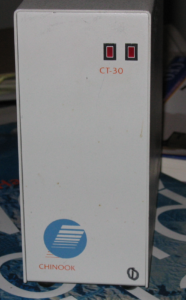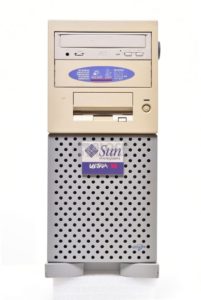I don’t know about the rest of the world, but here in America our police speak in a sort of code language. Instead of saying “he got out of the car and walked away,” the police will say, “the subject exited the vehicle and proceeded on foot.” It’s not that their language is any clearer–in fact it’s less clear. When talking to each other, the cops like to use language like this because it seems to elevate them and make them sound more professional.
A friend of mine told me a story of his friend who had always wanted to be a cop, but was too much of a screw-up to make it to the academy. Despite his failure he remained a police buff, perhaps a cop in his own mind. This fellow witnessed a crime and the local sheriff showed up. This non-cop started to describe the crime to the sheriff as cops do: “The subject exited the vehicle and proceeded to commit a 4-15…” The deputy cut him off and shouted, “speak English, boy!” The poor police-wannabe never lived it down.
Corporatist-types have a language like this too. Attempting to sound smart and professional, they speak in an often-inaccessible code language replete with b-school buzz words. I must admit, as long as I’ve been in the corporate world, I’ve frequently been confronted by language that I simply couldn’t understand.
“We collaborated with engineering and cross-functional product managers across multiple time zones to groom and prioritize backlog to ensure efficient program delivery.” Huh? “We need to build a motion that creates value at scale.” What? “The adoption journey enables us to innovate continuously.” Speak English, boy!
Then there was this gem, from an MBA describing a customer problem: “The customer is not in the mindset of extracting value from the product.” A lot of words there. How about three words: “It don’t work.” Or, “customer hates it.” Oh no. If the MBA spoke that way, he’d sound like he learned nothing at his prestigious business school. Professionals speak professionally, you see. If he spoke like a normal human being, some people might suspect he actually doesn’t really know anything. Although to be honest, that’s exactly what I was suspecting when he started talking about mindsets.
We can all fall into this trap, I’m afraid. I refused, for years, to use “ask” and “spend” as nouns, because they’re not nouns. (I remember an internal thread at Cisco years back in which someone said, “shouldn’t we productize that?” The snarky response came back from an engineer, “no because at Cisco we can’t turn nouns into verbs.”) Alas, I’ve surrendered to the progress of business-speak and have replaced “request” with “ask.” Saving one syllable with a frequently-used word has certainly given me hours back to do other things, don’t you think?
Technical people can certainly fall into this and we have our own jargon. Some of it is necessary. Here is a snippet of a Cisco doc: “To overcome the limitations of the flood-and-learn VXLAN as defined in RFC 7348, organizations can use Multiprotocol Border Gateway Protocol Ethernet Virtual Private Network (MP-BGP EVPN) as the control plane for VXLAN. ” This is wordy, and it is jargony. That said, I can’t think of a better way to say it. This sort of language is unavoidable for network engineers.
What I don’t like is technical people adopting MBA-speak because they’re surrounded by it. “Our latest release provides flexible options to operationalize your business intent.” Oh dear, even if you get into some good technical meat, you’ve lost me already. The simple secret for me in winning Cisco Live Hall of Fame for my speaking is simply to state things in plain, clear language. Technical, yes, but clear.
I used to think I was stupid, sitting in meetings in the corporate world and not understanding what on Earth people were saying. Then I learned that in many cases, the speakers didn’t understand what they were saying either. In the event that they actually do, a few pointed questions can usually cut through the fog of fancy words. I’m convinced many of the mistakes made in the corporate world would never happen if people actually spoke like normal people.
If you feel tempted to obscure your language to sound like you’re oh-so-smart, remember the advice of the deputy sheriff: Speak English, boy!

